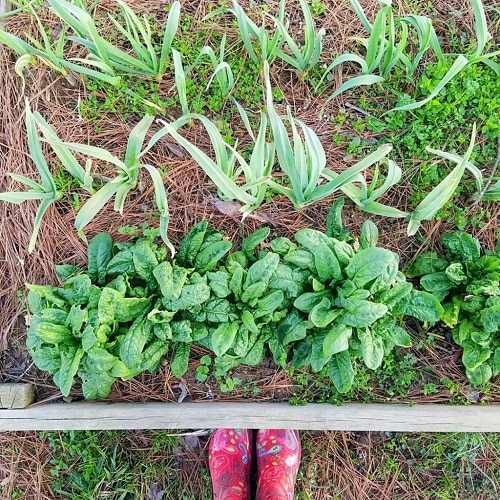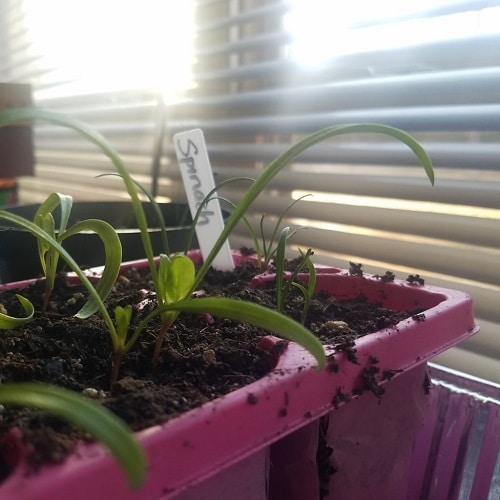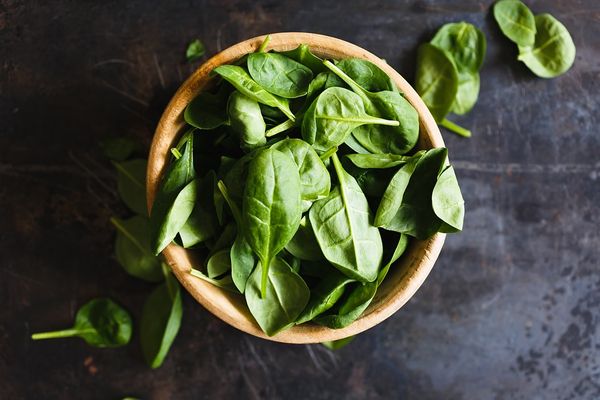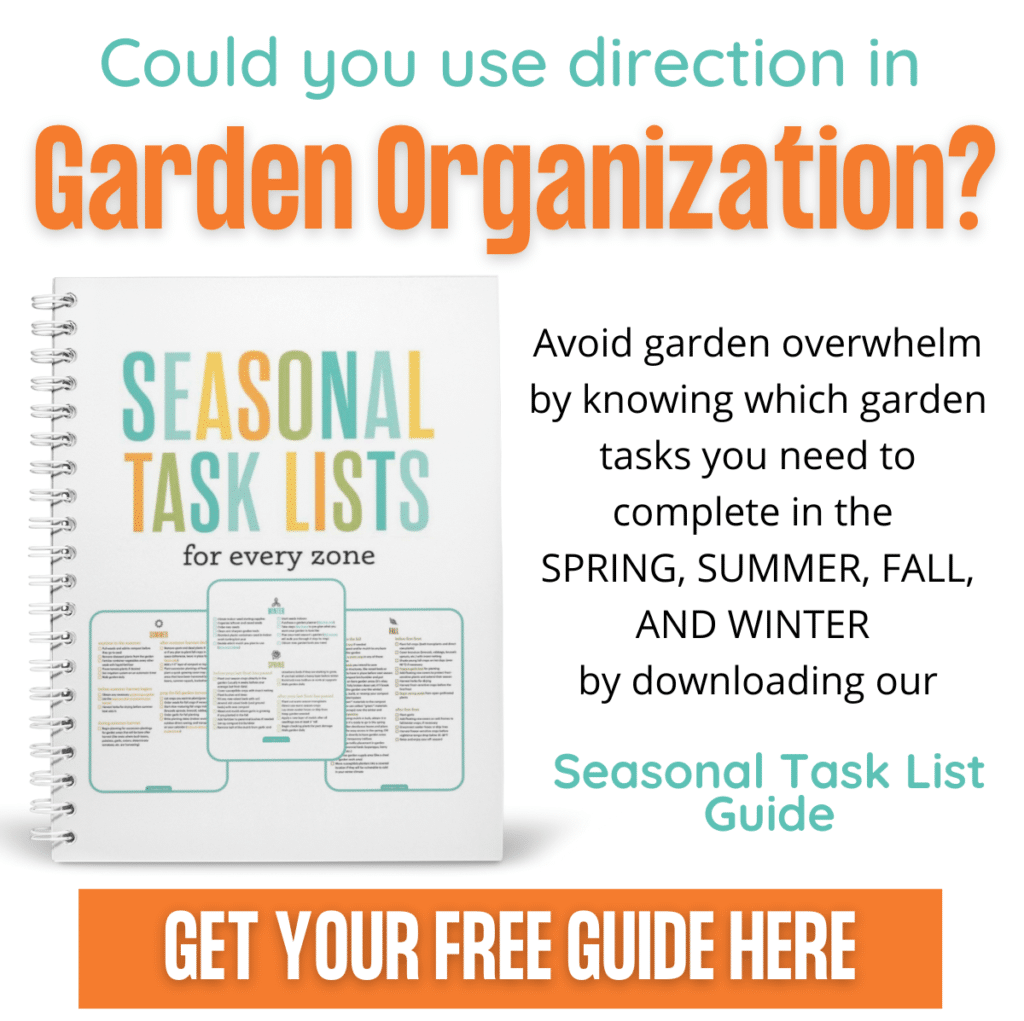Common Problems Growing Spinach (and how to prevent them)
If you grew up thinking that spinach only came in a can, you’re in good company. Pop-eye taught us to gulp it down, no matter how it tastes, because spinach is good for us, right? But, if you’ve ever had spinach out of a can, then you know why they needed a cartoon to help convince us to eat it!

It wasn’t until I was much older that I learned spinach can be eaten fresh, straight from the garden or lightly steamed or sauteed. Once I gave it a try, I was pleasantly surprised that it’s actually delicious! (No bland canned spinach for me, thank you.)
If you want to make homegrown spinach a part of your garden, it’s definitely one to put on your growing list.
However, like most things grown in the garden, it’s not without a few troublesome irks that hopefully, we can help you overcome. Listen to us talk about common problems growing spinach (and how to avoid them) on our latest podcast episode here, or continue reading.
How to Grow Spinach Successfully
To avoid the most common problems growing spinach in the home garden, it’s imperative you understand how spinach likes to grow. It’s actually pretty simple if you associate spinach with one word: COLD.
Spinach likes it cold-cold-cold
Spinach likes to grow in cool to cold weather. It prefers colder weather than almost all of your other greens.

Soil temperature for spinach seed germination
The seeds themselves germinate when the soil is between 40 degrees and 70 degrees. While the optimum soil temperature for seed germination is between 60-70 degrees, the fact that it can still sprout at 40 degrees should give you an idea of just how cold spinach likes to be.
Optimum Air Temperature for Growing Spinach
Spinach has a preferred growing temperature of 50 to 60 degrees and younger plants can survive temps as low as 15-20 degrees.
My spinach plants have survived lower temperatures than that for about a week, though they were covered by snow, which provided insulation. In a normal year, spinach survives and thrives all winter in my zone 7b climate.

I know it goes against what beginning gardeners assume because we’re trained to believe gardening is for the spring and summer. Don’t underestimate their ability to withstand colder temperatures than you might otherwise think.
When to Plant Spinach
Knowing now that spinach thrives in cold weather, you can understand why one of the biggest problems gardeners have in growing spinach is in when they plant.
More often than not, I tend to see fellow gardeners struggling most with their spring plantings of spinach. Nine times out of ten, it’s simply because they have sown their seeds too late.
Many first-time gardeners plant their spinach seeds at the same time as all their other spring crops — typically right after the average last frost date or right before. But spinach should be planted much, much sooner.
If you’re planting in the spring, it’s best to directly sow your seeds into the ground. Just keep in mind that if the soil is below 50 degrees, it’s more than likely going to take your seeds up to three weeks to germinate.

When to plant spinach in the spring
A general rule of thumb is to sow spinach seeds 4 to 8 weeks before your average last frost date for your springtime planting. (If the soil isn’t frozen, err on the side of 8 weeks before if you can!)
When to plant spinach in the fall
For fall planting, one of the biggest mistakes people make is planting too early. The soil is still too warm and the spinach doesn’t like to germinate. When soil temperatures are over 75 degrees, spinach seeds may not germinate at all, or they may germinate at a very low rate.
As a rule of thumb, plant spinach seeds in the fall 4 to 6 weeks before your average first frost date. If the soil temperature is still too warm at that time, sow more than you need to account for the lower germination rate.
Your climate matters, so observe and make adjustments accordingly.
Bolting
If you’re new to gardening, bolting is when the plant starts to set seed too early. This is usually a response to environmental stressors. For spinach, heat is almost always the culprit behind bolting, followed by moisture stress and day length.
While some plants like lettuce and cilantro can become bitter and inedible when the plant shifts to seed production, spinach tends to taste okay in my experience. Bolting spinach is a cue, though, to harvest what you can as soon as possible.

How can you prevent bolting in spinach?
- cover plants with a shade cloth in late spring and early fall
- keep water consistent
- mulch to prevent evaporation and slow soil temperature climb
- choose bolt-resistant varieties
Heat is the most common cause for bolting, so you may consider covering your plants with a shade cloth to keep them cooler longer into the season.
Another cause for bolting is a lack of water or dry soil. Remember, as temperatures climb in the spring, evaporation occurs at a faster rate. Make sure you keep consistent water on your plants as the weather warms up and consider adding mulch to your bed or container to inhibit this rapid evaporation.

The lengthening of the days in spring also plays a part in bolting, and there’s really nothing that you can do about that. Again, a shade cloth can help, or you can try choosing a bolt-resistant variety to help offset the natural elements that you can’t control.
Although those four suggestions are helpful if you’ve already planted your spinach, the best way to prevent bolting in spinach is to plant at the right time — earlier in the spring and later in the fall than most other cool season crops.
Soil Conditions
Soil is a major factor in almost all areas of the garden, spinach included. Spinach prefers well-drained soil, rich in organic matter, and consistent in moisture.
Spinach is also sensitive to acidic soil. The soil needs to have a pH of at least 6.0 but it can tolerate up to 7.5. If you haven’t done a soil test, I highly recommend you do one so that you know what you’re working with and amend it as needed.
Also, because spinach develops a taproot, make sure that your soil is loose further down than you think you need to (8 to 10 inches). As odd as it sounds, this is similar to what you’d do for carrots. Spinach will grow in areas more shallow than that, but the deeper you can provide a loose soil, the healthier the plants will be.

Growing Spinach
Don’t plant too close together (unless harvesting baby spinach)
If you plant your spinach too close together, this can cause a few problems. Spinach doesn’t like competition for space and nutrients, and you’ll harvest larger, healthier leaves from plants given at least 4″ of space between plants.
If you scatter your seeds and end up with a high germination rate, just know that you’ll probably need to thin out your baby leaves to make space for ideally 4 inches between plants so that they can reach their potential. This usually isn’t a problem because we all like baby spinach in our salads, right?

Direct sow vs. transplanting
I have only tried to sow my seeds indoors and transplant them a handful of times and each time they bolted almost as soon as I got them in my garden.
One reason is that spinach, having a taproot, doesn’t like its root system disturbed. Another reason spinach dislikes transplanting is that often we’re transplanting them in either a late summer/fall garden, where air temperatures are still hot, OR we’re transplanting them in the spring when a combination of warm, spring days and increasing day length triggers bolting.
While transplanting spinach can be done, the Cornell University Extension site suggests that transplanting tends to be difficult, so just keep that in mind if you’re new to indoor seed starting.

Sunlight
We’ve already spent a lot of time discussing that spinach likes to grow in cold weather, so you might assume that it likes shade.
While spinach would prefer shade in the late spring and summer, it actually prefers full sun in the fall and winter when the daylight hours are shorter.
When you’re considering where to plant your spinach in relation to sunlight, consider the time of year it is growing. If you plan to grow it into the spring, have a shade cloth ready to go as the days lengthen.
Downy Mildew and other diseases
While I’ve never experienced disease issues in my spinach crops, downy mildew is the disease that is the most common. You can avoid this by spacing your plants further apart, considering a more resistant variety, and water at the soil level and not your leaves.

Take the RIGHT steps to grow delicious spinach at home!
Spinach is a delicious crop that can be grown year-round for a lot of gardeners. It’s versatile enough to grow in the ground, raised beds, containers, and even in a vertical planter.
When not much else thrives in the garden, spinach can give you that fresh-picked goodness that makes the fall and winter so much sweeter!
I hope that you’ve learned some tips or tricks to help your harvest this fall and winter. As always, tag us in your spinach photos and show us how it went.


